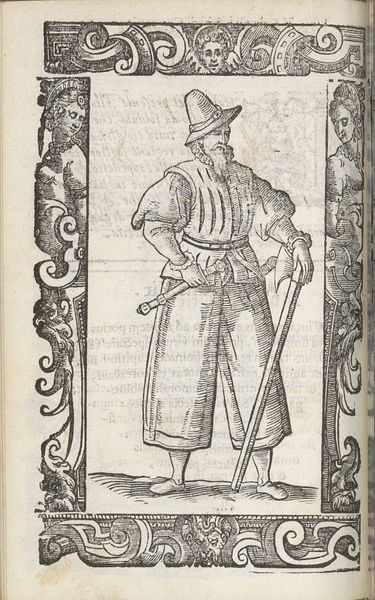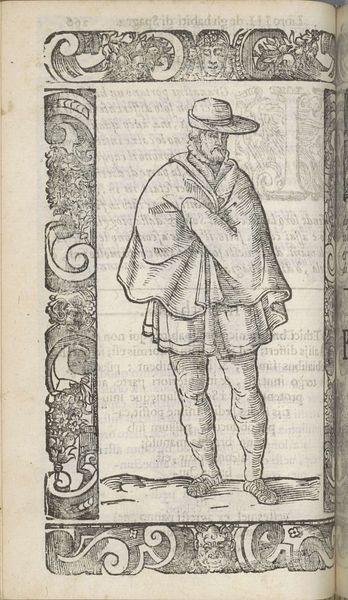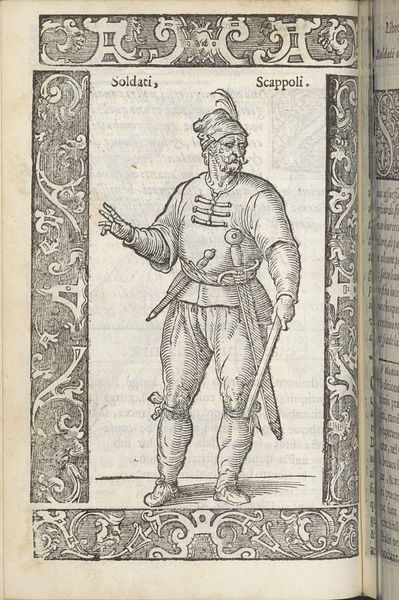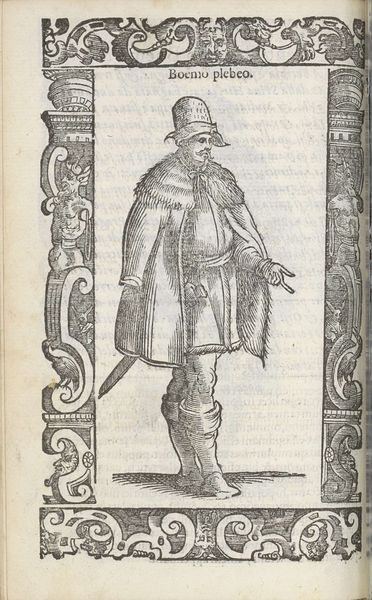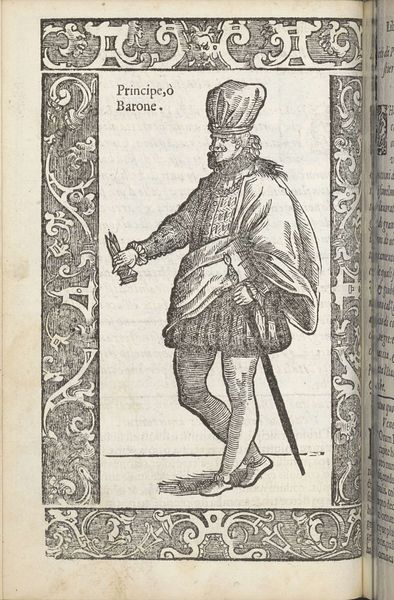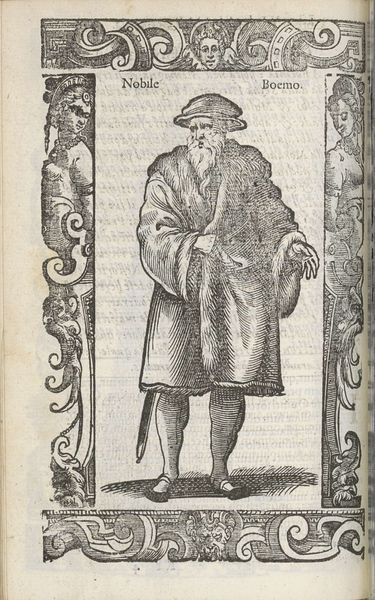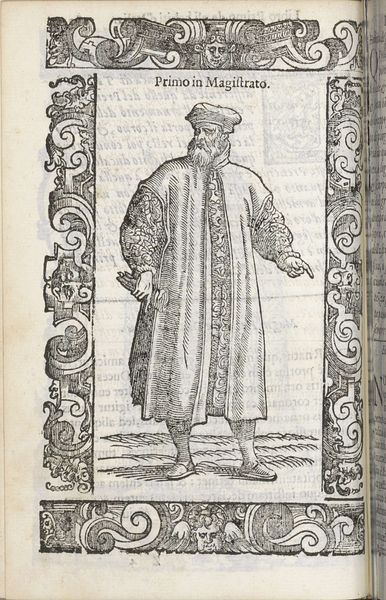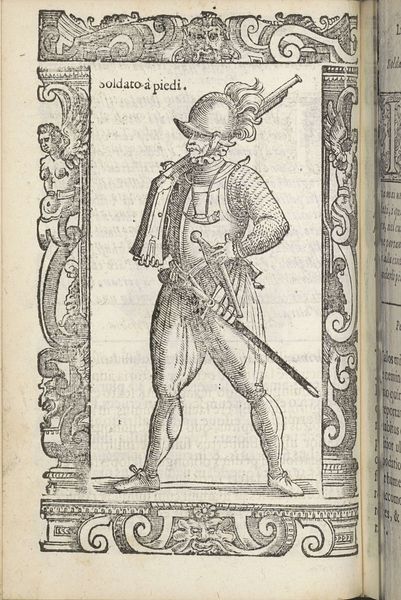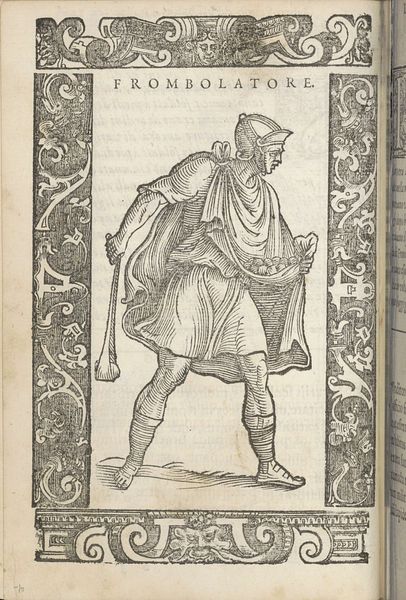
drawing, print, engraving
#
portrait
#
drawing
# print
#
pen sketch
#
pencil sketch
#
old engraving style
#
figuration
#
11_renaissance
#
history-painting
#
northern-renaissance
#
engraving
Dimensions: height 167 mm, width 125 mm
Copyright: Rijks Museum: Open Domain
Curator: This engraving, "Turkse tot slaaf gemaakte man," or "Turkish enslaved man" in English, was created by Christoph Krieger in 1598. It offers an imagined view of Ottoman identity from a Northern Renaissance perspective. Editor: It’s a haunting image, isn't it? The way the man's posture almost recoils inward, as though bracing for a blow, contrasted by the very elaborate and beautiful border... the title too is really sad to hear. It feels steeped in vulnerability. Curator: Absolutely, and that tension between vulnerability and the rigid frame speaks volumes. Krieger was working within a tradition of depicting the "exotic other," so how much is observation versus constructed prejudice here? The dress, the turban... all become signs, markers of difference. What stories did viewers at the time bring to this image? Editor: Exactly. We have to be careful about what the image is telling us, and what stories about the "Turk" were circulating at this moment. Is Krieger critiquing or upholding the practice of enslavement? Or perhaps, is this a sort of detached, “objective” recording—which itself is a choice? Curator: Well, there’s definitely an emphasis on detail. Look at the intricate lines of the fabric, the texture of the turban, and even the floral embellishments on the page. The man holds something concealed by his arm… a symbol of what, do you suppose? Editor: A gift perhaps, or something he has traded as part of his enslavement. These visual elements create a palpable sense of this person being "on display" for the viewer's curiosity or judgement. That really highlights the power dynamic inherent in the gaze, the power to objectify, to categorize, to dehumanize through representation. Curator: That gaze makes me profoundly uncomfortable; I see it still perpetuated today, even unconsciously. We project assumptions. What narratives do we construct about each other and how much awareness do we really have about it? This is an artwork from so many centuries ago that still is talking with our present. Editor: Yes, it makes us really consider how little has changed, and why historical images must continue to be analyzed with the help of modern theories and understandings about identity, race, and politics. These "historical" issues persist even now, they have taken new forms, or changed surfaces. Curator: Beautifully said! And for me, it is really about acknowledging that complicated conversation. It seems important not to allow our views of beauty distract from, or conceal the uglier undercurrents beneath.
Comments
No comments
Be the first to comment and join the conversation on the ultimate creative platform.

